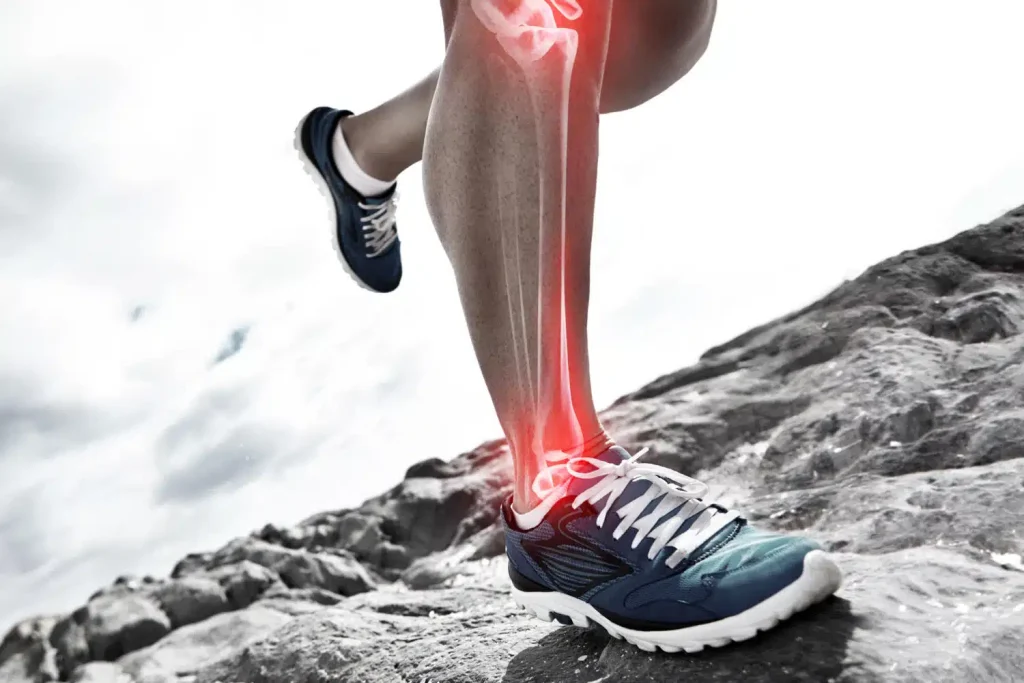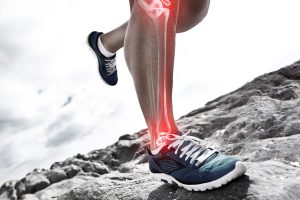Here we are at the last article on the most common running injuries.
Today we will cover two injuries of different nature: muscle injuries and shin splint syndrome. These share only one characteristic: they have a low incidence among runners. In other words, to reassure our readers, they occur rather rarely.

Muscle injuries refer to anatomical damage to the muscle fibers themselves. Depending on the percentage of fibers affected, they are classified as grade I, II, or III strains. Within the classification of “muscle injuries,” contractures and elongations are also included, but in these latter cases there is no structural lesion—the muscle fiber remains intact.
Before clinically presenting the difference between strains (grades I, II, III) and muscle contractures, we would like to remind our runners that, if they experience similar issues, they should always consult a healthcare professional to manage the situation properly.
Difference Between Muscle Strain and Muscle Contracture
From a clinical perspective, these two injuries differ in their onset: muscle strain usually occurs suddenly and is clearly perceived by the athlete, who during an action such as a sprint or a change of direction feels a “sharp pain” in the affected muscle. Muscle contracture, on the other hand, typically appears after physical activity, either in the hours following or even the next day. The runner will feel an excessive and painful muscle tension that limits daily and sports movements. Recovery times are also very different: for muscle injuries, depending on their grade, it may take from 1 up to 4 months before returning to pre-injury performance, whereas for muscle contractures recovery is measured in weeks, with significantly shorter timelines.What Is the Best Activity to Minimize the Risk of Muscle Injuries?
On this topic, scientific literature is very clear and almost unanimous: resistance training. Performing exercises with barbells, dumbbells, and external loads improves the tissue quality of tendons and muscles, making them more resilient and less prone to injury. Unfortunately, it must be reiterated that passive stretching has long been shown to be ineffective in reducing muscle injuries. A strong muscle is most often also an elastic one, capable of handling the various forces it encounters during running, changes of direction, and different types of jumps.Shin Splint Syndrome
This is a musculoskeletal condition not caused by trauma but rather by prolonged overload of the anterior tibia. This injury may occur in runners or, more generally, in sports involving repetitive movements with continuous lower limb impacts on the ground. The athlete will mainly complain of pain along the medial (inner) border of the tibia, at first only during physical activity, later possibly also at rest. Although diagnosis is based on a thorough anamnesis and reproduction of the patient’s painful symptoms by palpating the inner tibial border, imaging is often used to rule out more severe conditions, such as fractures. Some risk factors include: history of shin splints, high BMI, female sex, high navicular drop, increased ankle dorsiflexion mobility, reduced hip external rotation mobility, and vitamin D deficiency.Treatments
Unfortunately, for this particular musculoskeletal condition, despite numerous treatment methods having been studied (gait retraining, rest, ice, massage, shockwave therapy, stretching, strength programs, use of braces/orthoses/supports, injections), no single technique has been found to be significantly more effective than others. It will therefore be up to the therapist, together with the patient, to develop a treatment plan based on both the patient’s preferences and the therapist’s clinical experience. Prognosis is also long: several studies have shown that those suffering from tibial pain for more than three months may take up to 9 months to return to running pain-free. As always, the best prevention is training load management—weekly mileage should increase gradually (by about 10–20% from one week to the next) to allow the body to adapt to new workloads.Muscle injuries and shin splints are often underestimated, but they can compromise training consistency in the long term. If you want to explore other at-risk areas in running, also read our articles on:


